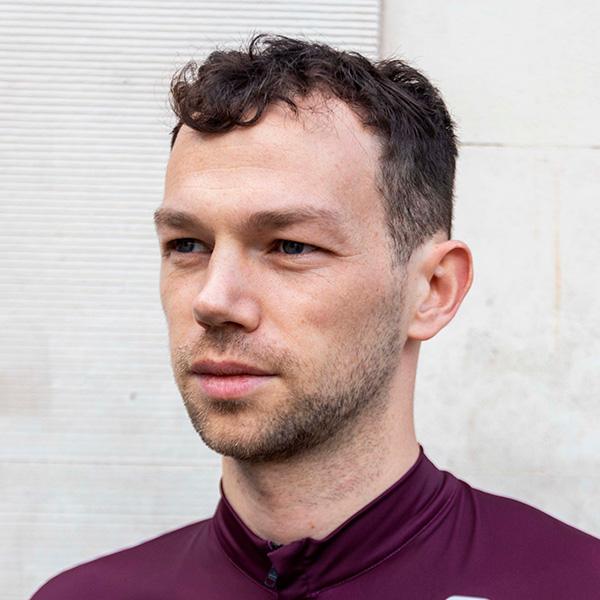Wout van Aert is testing a time trial bike with two disc wheels ahead of the Paris 2024 Olympic time trial.
While it’s common for time trialists to run a single disc wheel on the back of their time trial bike, paired with a deep-rimmed front wheel, it’s rare for a rider to use a double-disc setup.
A typical time trial setup – a disc rear wheel and a deep-rimmed front wheel – enables riders to take advantage of the significantly improved aerodynamics of a rear disc, without it having a disproportionately adverse impact on the bike’s handling.
Track pursuit riders regularly use two disc wheels, but it’s much less common for road riders to run a double-disc setup in a time trial. Choosing the most aerodynamic wheel at the front of the bike (i.e. a disc) won’t necessarily be the fastest option if you can’t control the bike in the wind.
Why choose two disc wheels?

Wout van Aert must be confident in – or at least intrigued by – the potential benefits of a double-disc-wheel setup for this Saturday's Olympic time trial.
Shara Marche used a double disc at London 2012, although the Aussie finished in 13th place, 2:15 behind the winner.
The Paris 2024 Olympic time trial course starts in Les Invalides in the 7th arrondissement of Paris before heading east to Fontenay-sous-Bois and back to its starting point via Place de la Bastille.
The 32.4km course is flat with long straights and only 150m of ascent. Wout van Aert may think that, with few turns and little climbing, there will be little disadvantage to running two disc wheels. If that’s the case, the extra weight and the compromised manoeuvrability of his Cervélo P5 time trial bike shouldn’t be a penalty.

Van Aert may have also considered the weather, which is forecast to be raining but still on Saturday, meaning he doesn’t have to worry about the front disc wheel being blown around in the wind.
This is a point former WorldTour pro and time trial specialist Alex Dowsett acknowledges on Instagram. “I wouldn't be surprised if it's used on race day though it's completely wind dependant,” wrote Dowsett, also suggesting "a lenticular design should help stability".
However, so far we’ve only seen Van Aert riding in training. He has also been testing a more conventional deep-section front wheel on the Paris Olympics time trial course and may opt for this setup on race day.
More aero tweaks

Beyond the two-disc wheels, Van Aert appears to be considering several other drag-reducing kit choices to improve his chances of standing on the top step of the podium.
He’s been out testing the course wearing the Giro Aerohead 2.0 helmet, which was revealed earlier this year at Tirreno-Adriatico.
The Aerohead 2.0 follows the trend for time trial helmets growing steadily in size. The helmet’s wide wings presumably shift air from the leading edge of the helmet and around the shoulder.
The most striking aspect of the helmet, however, is its length. It extends far beyond the rider’s forehead to create a cone-like profile.

The Belgian’s Paris time trial bike also has a 1x drivetrain with a huge front chainring. Forgoing a front derailleur can reduce drag and Van Aert won’t need the gear range of a 2x setup on the flat course.
Van Aert, who finished sixth in the Tokyo 2020 Olympic time trial and claimed silver in the men’s road race, is wearing lace-up shoes from his team sponsor Nimbi in testing.
Laced cycling shoes may seem to be lower-tech than those with wrap-around uppers and Boa dials, but they could offer Van Aert a further advantage.
The low profile of laced shoes is purported to be more aerodynamic than cycling shoes with Boa dials that protrude upwards into the air.
This isn’t the first time Van Aert has switched to lace-up shoes for a time trial – he opted for lace-up shoes for the closing time trial of the 2024 Tour de France.
Dr Xavier Disley: It’s not a surprise
Dr Xavier Disley is head of AeroCoach, a performance consultancy that manufactures front disc wheels. He says “It’s not a surprise” Wout van Aert is testing this technology for the Paris Olympics time trials.
“We sell front disc wheels on our website and have done for a couple of years now for TT use.
“It's a performance advantage as long as the wheel is fast and it’s a good course for it.
“We can only really talk about the data on the wheels that we make.
“At let's say 50K an hour, we say the difference between our 10mm-deep front wheel and then the front disc that we make, is about 4 watts. So that's somewhere between 10 and 15 seconds over the Paris course.
“I've ridden double-disc wheels outside and once you get up to speed, they're a lot more stable.
“The issue is if you're going slowly and you get crosswinds, that will sort of knock your front wheel. But when you're riding one of these things, the idea is you're going real quick. So once you're up to speed, the effective yaw angle decreases and therefore the impact of crosswinds decreases a bit as well.
“He knows what he’s doing in terms of kit, so if he thinks he’ll be faster for it, he’ll do it.”
